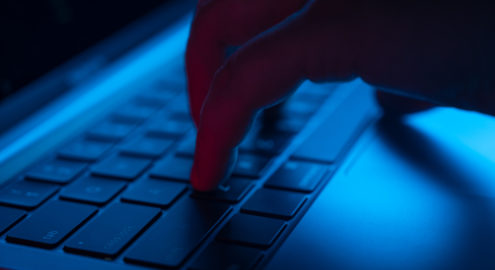Impact
Ask the Expert: What Is Organized Retail Crime and How Does it Affect Me?

In 2018, police in Dearborn, Michigan broke up a crime ring, confiscating guns, alcohol and many other stolen goods. It was a well-run criminal organization, but it wasn’t the Mafia or a gang; it was an organized retail crime ring run by a 70-year-old woman who recruited people with drug addictions to steal from stores. She made money reselling the stolen goods, which included everything from ceiling fans to energy drinks. The chief of police in Dearborn called it a “million dollar operation.”
While it may seem strange for a criminal organization to be built on stolen Red Bull and appliances, organized retail crime is a problem that generates millions for criminals every year — and costs retailers millions as well. According to the National Retail Association, organized retail crime cost retailers an average of $719,548 per $1 billion dollars in sales in 2020.
Ask the Expert: How Can I Protect My Business From Looting During A Protest?
What is organized retail crime?
Organized retail crime is exactly what it sounds like: crimes that target retailers, but which are planned ahead of time, and often involve multiple individuals. This isn’t spur-of-the-moment theft, or one person shoplifting. These are incidents that often feature a high level of coordination, and which are sometimes staged by organized criminal groups.
There are several varieties of organized retail theft:
The smash and grab (and other organized shoplifting)
The most common form of retail crime is the smash and grab. Like the Dearborn crime ring, smash-and-grabs are a form of organized shoplifting. A group of people coordinate attacks on a business or group of businesses at the same time. Sometimes this sort of crime is organized by a group, like a gang, and sometimes smash and grabs are coordinated via social media, and some people will just do it to get likes on social media. In a smash and grab, a group of people will go to the same location at one time, steal as much as they can, and run. This can pose a problem for any store’s security — if a hundred people shoplift simultaneously, it can be almost impossible prevent the incident or to stop them all.
Cargo theft
The National Retail Federation found that 58% of businesses were a victim of cargo theft in 2020. Most of that theft happened between the distribution center and the store, although a fair amount of theft (38%) happened at the store as well. This is often an inside job, with cargo stolen by employees who have access to pallets, trucks, and containers.
Once the merchandise has been stolen — whether it came off the truck or the shelves — thieves have to get rid of the goods. They can do this in a couple of ways.
Return fraud
Many times stolen merchandise is returned to the store for store credit, cash, or gift cards. Groups who organize return fraud schemes are savvy; they use different people for the theft and returns, and use multiple locations, stealing from one store and returning at another. However, these groups tend to follow a pattern, hitting the same stores in an area.
Fencing
Like the head of the crime ring in Dearborn, often organized retail crime groups will fence stolen goods. This can happen in several ways. The group may sell them directly, use a pawn shop, or — more recently, may sell stolen goods online. This last method is increasing in popularity. The National Retail Federation found that most stolen goods were fenced through websites in 2020, and in Congressional hearings last year, Amazon CEO Jeff Bezos admitted that stolen goods were being sold by Amazon sellers on the site.
Ask the Expert: I'm a Small Business Owner, Do I Really Need Cameras in My Establishment?
How can you respond to organized retail crime?
While you can’t prevent everything, and a smash-and-grab in process is difficult to stop, you can prepare for response and recovery ahead of an incident.
It’s important, for example to have high-quality cameras, both in the public area of your store and in the employee-only areas — at the registers, in the stockrooms, and at the loading dock. Your cameras should be working and up-to-date so that you can identify criminals after the theft. Facial recognition, license plate recognition, and cameras that send alerts to a manager’s phone can help you respond quickly and identify perpetrators. Once they’re identified, those people can be banned from your store, and charged with a crime.
Aggressive customer service — making sure that someone is “helping” a potential thief often deters shoplifters who are working alone or in pairs. Background checks are helpful in identifying potential employees who have been involved in shoplifting incidents previously.
Need help making a plan to deter organized retail theft? Contact us and set up a demo today.




